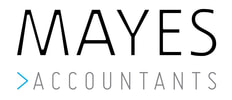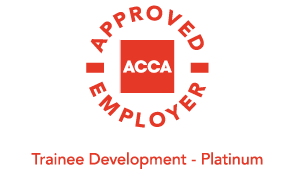NEW Guidance - Job Retention Scheme
Published 17 April 2020
NEW Guidance for Employers
The Treasury has released a direction under the Coronavirus Act 2020 which sets out further details on the Coronavirus Job Retention Scheme and new guidance for employers.
The Treasury has released a direction under the Coronavirus Act 2020 which sets out further details on the Coronavirus Job Retention Scheme and new guidance for employers.
Who can claim?
The guidance has been changed and now states that the employer must have created and started a PAYE payroll scheme on or before 19 March 2020 (previously 28 February).
Employers should retain all records and calculations in respect of their claims (presumably for five years).
The guidance has been changed and now states that the employer must have created and started a PAYE payroll scheme on or before 19 March 2020 (previously 28 February).
Employers should retain all records and calculations in respect of their claims (presumably for five years).
Employment start date
The biggest change is that the cut off point for employing eligible employees has been changed from 28 February to cover employees who were on PAYE payroll on or before 19 March and who were notified to HMRC on a RTI submission on or before 19 March.
The biggest change is that the cut off point for employing eligible employees has been changed from 28 February to cover employees who were on PAYE payroll on or before 19 March and who were notified to HMRC on a RTI submission on or before 19 March.
Agreement to furlough
The Schedule states: “An employee has been instructed by the employer to cease all work in relation to their employment only if the employer and employee have agreed in writing (which may be in an electronic form such as an email) that the employee will cease all work in relation to their employment”.
An agreement to furlough and not just notification will be required.
The Schedule states: “An employee has been instructed by the employer to cease all work in relation to their employment only if the employer and employee have agreed in writing (which may be in an electronic form such as an email) that the employee will cease all work in relation to their employment”.
An agreement to furlough and not just notification will be required.
Reimbursement
The Schedule states that 'reimbursement' of wage costs are costs which have been “incurred or to be incurred” and therefore the fact that payment has not been made does not seem to be a bar to making a claim.
The Schedule states that 'reimbursement' of wage costs are costs which have been “incurred or to be incurred” and therefore the fact that payment has not been made does not seem to be a bar to making a claim.
If you have more than one qualifying PAYE scheme:
- the employer must make a separate claim in relation to each scheme and:
- the amount of any payment under CJRS will be calculated separately in relation to each scheme
- the employer must make a separate claim in relation to each scheme and:
- the amount of any payment under CJRS will be calculated separately in relation to each scheme
Unpaid leave
Unpaid leave after 28 February 2020 - Can put the employee on furlough instead.
Unpaid leave before 28 February - Can not put the employee on furlough before the agreed date that they would return to work.
Unpaid leave after 28 February 2020 - Can put the employee on furlough instead.
Unpaid leave before 28 February - Can not put the employee on furlough before the agreed date that they would return to work.
Sick pay
The new guidance states: "If employers want to furlough employees for business reasons and they are currently off sick, they are eligible to do so, as with other employees. In these cases, the employee should no longer receive sick pay and would be classified as a furloughed employee”.
The Treasury’s Schedule says where SSP is payable or liable to be payable at the time the employee is put on furlough, the minimum three-week period does not begin until the original SSP has ended.
The new guidance states: "If employers want to furlough employees for business reasons and they are currently off sick, they are eligible to do so, as with other employees. In these cases, the employee should no longer receive sick pay and would be classified as a furloughed employee”.
The Treasury’s Schedule says where SSP is payable or liable to be payable at the time the employee is put on furlough, the minimum three-week period does not begin until the original SSP has ended.
Employees who left employment after 28 February
Employees who were made redundant or stopped working for the employer after 28 February and before 19 March can be furloughed if the employer chooses to re-employ them and put them on furlough.
Employees who were made redundant or stopped working for the employer after 28 February and before 19 March can be furloughed if the employer chooses to re-employ them and put them on furlough.
Location |
Registered as Auditors and regulated for a range of investment business activities in the United Kingdom by the Association of Chartered Certified Accountants Copyright@2018 Mayes Business Partnership Ltd 1974-2024
|







